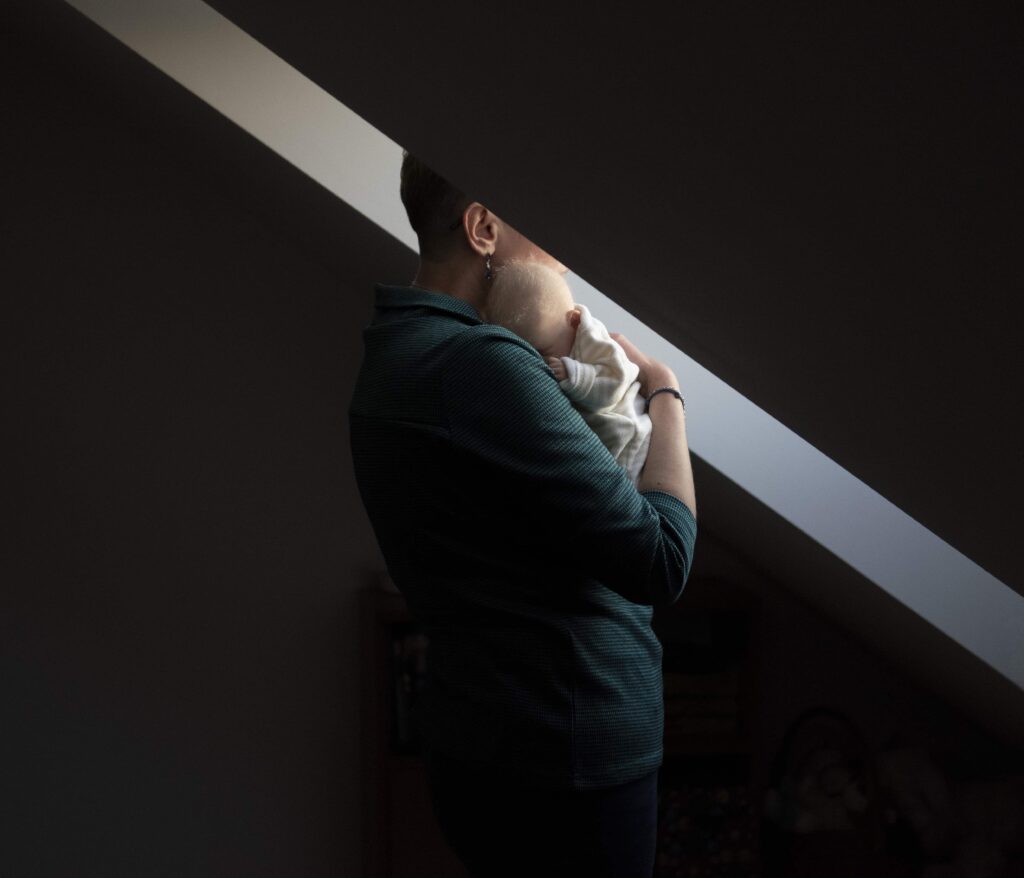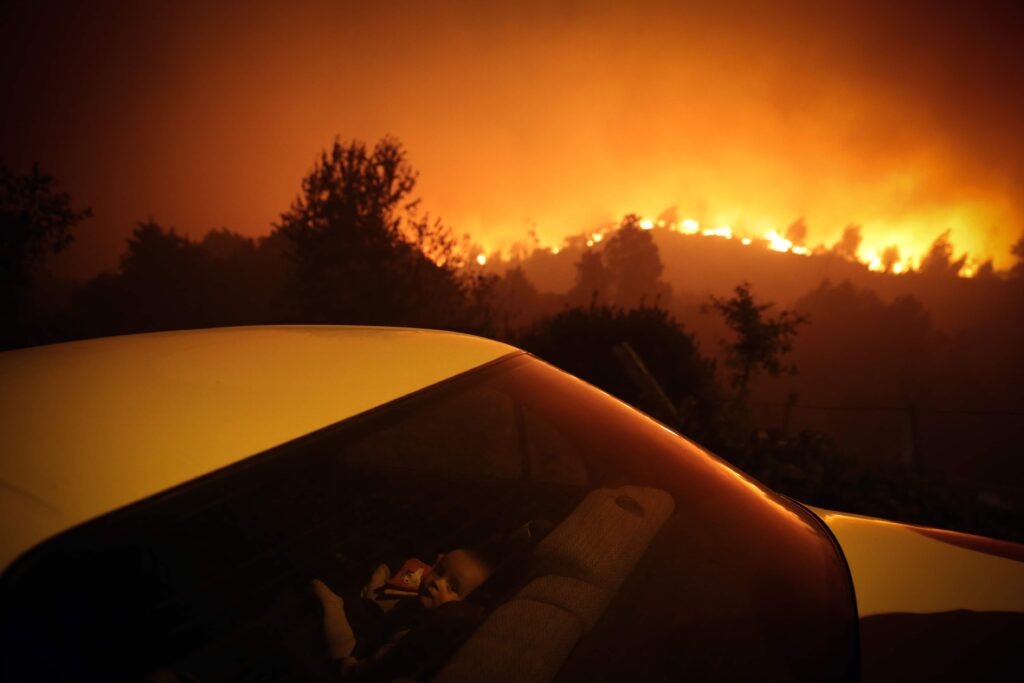
World Press Photo 2021 opens in Budapest
How do you organise a major global exhibition in the Covid-era? Exhibitions manager and curator at World Press Photo, Sanne Schim van der Loeff, told CET how she and her colleagues have kept the show on the road, as it opened at the Hungarian National Museum in Budapest. World Press Photo 2021 runs until October 31, with Central Europe represented by the “Reborn’ photo series by Poland’s Karolina Jonderko, which looks at the phenomenon of hyper-realistic ‘reborn’ dolls. Mads Nissen of Denmark won this year’s World Press Photo of the Year with ‘The First Embrace’.
You have been working for World Press Photo for some years. How different has it been to select photographs taken during the year of the global Covid outbreak?
The stories deal with photographs that were taken in 2020, so the pandemic is featured quite heavily. What I think the jury did very interestingly this year is that they looked for pictures that weren’t necessarily obvious storylines. There are not just pictures that deal with photos from the hospitals or people that are suffering. These pandemic stories are really looking at the kind of underlying consequences for all of us. So you’ve got a picture that deals with people who couldn’t work out anymore in their house. So how did they stay fit? You’ve got the overall winner, which is a photo of an elderly lady being hugged for the first time through a hugging curtain. So all these little bits of different narratives, which I think they did wonderfully. So that’s, that’s the main theme. The other two themes, which, unfortunately, will stay dominant, are the climate crisis – bushfires, water shortages – and social justice movements. So there’s two stories in there that deal with Black Lives Matter protests in the US, but also protests in Peru, etcetera. So those are three dominant themes this year.

Reborn
© Karolina Jonderko, Poland
Lincoln Emancipation Memorial Debate
© Evelyn Hockstein, United States, for The Washington Post
New Life
© Jaime Culebras, Spain
Leaving Home in Nagorno-Karabakh
© Valery Melnikov, Russia, Sputnik
Habibi
© Antonio Faccilongo, Italy, Getty Reportage
The Transition: Ignat
© Oleg Ponomarev, Russia
Resting Soldier
© Vaghinak Ghazaryan, Armenia
California Sea Lion Plays with Mask
© Ralph Pace, United States
Fighting Locust Invasion in East Africa
© Luis Tato, Spain, for The Washington Post
Doctor Peyo and Mister Hassen
© Jérémy Lempin, France
Port Explosion in Beirut
© Lorenzo Tugnoli, Italy, Contrasto
Leaving Home in Nagorno-Karabakh
© Valery Melnikov, Russia, Sputnik
Sakhawood
© Alexey Vasilyev, Russia
Pantanal Ablaze
© Lalo de Almeida, Brazil, for Folha de São Paulo
Have 21st Century technologies helped you to overcome pandemic-related practical issues?
Yes, definitely. I think we realized that you don’t need to be everywhere, but there are certain places you want to be. We have partners who don’t organize huge side programmes, or just have very small events. And from a sustainability perspective, it might not be necessary, or even, you don’t even want to be there. I think we learned that we could be slightly more selective and also that most of the partners that we have really see value in having a physical exhibition. There was this assumption, I think, when when the pandemic hit: “well, all of this stuff’s online anyway, so people can still go to our website”. But we realized very quickly that our audiences, all over the world, value having a physical exhibition. We noticed how quickly our partners were coming back and saying: “no, we really want to host this exhibition, no matter what.” And I think that was something that was very heartwarming in a time where everybody suffered the financial consequences of the pandemic.
How does World Press Photo 2021 compare to the pre-Covid exhibitions, in terms of numbers?
The expectation is we will hit about 85 locations. So that’s still great, considering the circumstances. Something we really got hit by the pandemic – and have to start building again – is the representation of cities in the sense that we were really, we were really making strides in diversifying our exhibitions into Latin America, the African continent, and all these places outside Europe, North America and Australia. And we were really making strides there and creating these long-term partnerships. And then because of the pandemic, a lot of these people, just the financial consequences for them were too harsh. And that’s something that we really going to have to start building up again, very slowly. If you look at all the past exhibitions that we’ve had this year, you’ll see that we have had exhibitions in all these different continents and regions, but right now the World Press Photo is predominantly in Europe.
Where else is the World Press Photo 2021 exhibition being held this year?
It has been quite an interesting two years, because before the pandemic hit, our exhibition was actually in over 120 places in about 50 countries. So we’re really growing in the kind of representation area of things, you know, really kind of getting more and more momentum, and then the pandemic hit, and that just got cut down to 65 last year. But this year has been very interesting. So this year, we’ve been, I mean, it’s, it’s, it’s been quite Europe-heavy, just because it has been very hard to ship things over. But at the same time, we’ve been to Kigali we’ve been to Rwanda, we’ve been to a few places in Canada, we’re in Australia, also, and many different places in Europe.

The First Embrace
© Mads Nissen, Denmark, Politiken/Panos Pictures
Reborn
© Karolina Jonderko, Poland
Pantanal Ablaze
© Lalo de Almeida, Brazil, for Folha de São Paulo
The Human Cost of COVID-19
© Joshua Irwandi, Indonesia
COVID-19 Pandemic in France
© Laurence Geai, France
COVID-19 Pandemic in France
© Laurence Geai, France
The ‘Ameriguns’
© Gabriele Galimberti, Italy, for National Geographic
The ‘Ameriguns’
© Gabriele Galimberti, Italy, for National Geographic
The ‘Ameriguns’
© Gabriele Galimberti, Italy, for National Geographic
Forest Fire
© Nuno André Ferreira, Portugal, Agência Lusa
Niewybuch
© Natalia Kepesz, Poland
Presidential Vacancy
© Ernesto Benavides, Peru, Agence France-Presse
Presidential Vacancy
© Ernesto Benavides, Peru, Agence France-Presse
Minneapolis Unrest: The George Floyd Aftermath
© John Minchillo, United States, Associated Press
Waiting for Release at a Temporary Detention Center in Belarus
© Nadia Buzhan, Belarus





